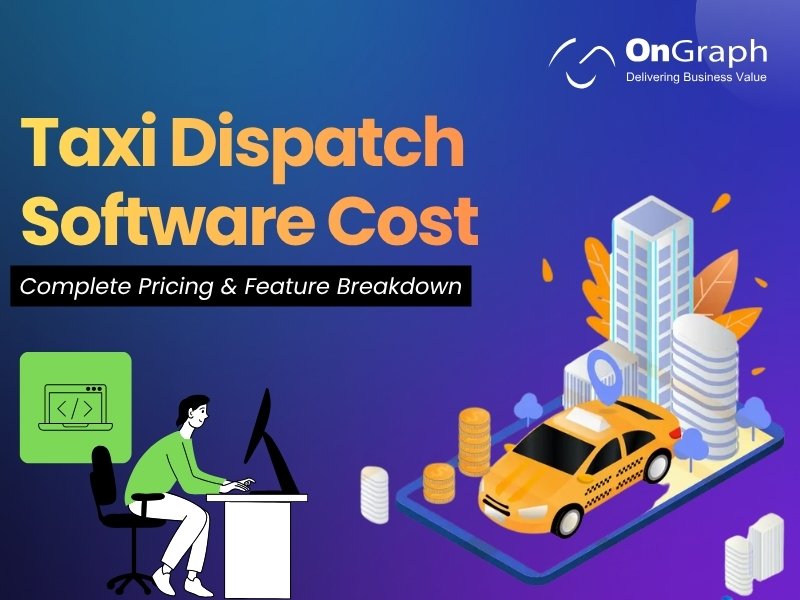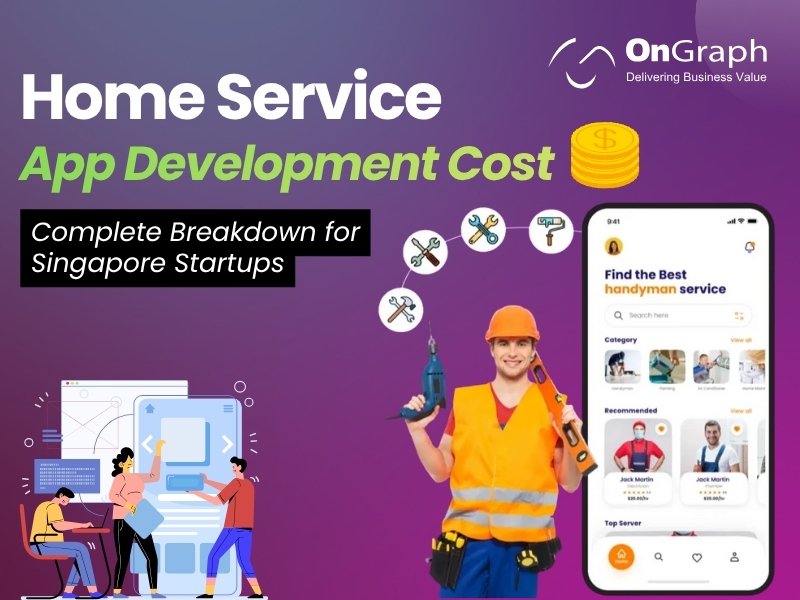In this article
- Why Taxi Dispatch Software Matters?
- Average Taxi Dispatch Software Cost in 2025
- Key Factors That Influence Taxi Dispatch Software Cost
- Taxi Cab Dispatch Software: Key Features to Expect
- Cloud-Based Taxi Dispatch Systems: Why They Dominate in 2025
- Case Study: Medium Fleet Using Cloud Dispatch
- Taxi App Deployment Challenges (and How to Avoid Them)
- Best Taxi Dispatch Software Options (2025 Overview)
- Small Fleet Taxi Dispatch Software: Cost-Saving Strategies
- Cost Summary by Fleet Scale
- Expert Insight: Cost Optimization Tips
- Final Thoughts
When starting or scaling a taxi business, understanding the taxi dispatch software cost is essential. Dispatch software is the operational backbone of any taxi fleet—it manages bookings, routes, drivers, and payments efficiently.
Whether you’re running a small 20-car fleet or a 500-vehicle operation, your dispatch system determines profitability and customer experience. But how much should you budget for it?
This comprehensive guide explains what drives taxi dispatch software cost, outlines feature expectations, explores cloud-based and small fleet options, and provides examples and real cost breakdowns for 2025.
Why Taxi Dispatch Software Matters
Dispatch systems replace manual booking and communication chaos with automation and analytics. A single dashboard coordinates:
- Driver availability and nearby requests
- Passenger bookings via apps or the web
- Route optimization using GPS and AI
- Payments, invoicing, and driver payouts
- Fleet performance reports
Modern taxi businesses, especially those migrating from traditional radio dispatching, use taxi cab dispatch software to improve efficiency and transparency.
For example, data from Statista (2025) indicates that over 68% of taxi operators globally now use cloud dispatch systems, showing the industry’s shift toward automation and digital control.
Average Taxi Dispatch Software Cost in 2025
The taxi dispatch software cost depends on business size, deployment model, and customization. Here’s a breakdown of 2025 pricing ranges based on fleet scale and complexity:
| Fleet Size / Type | Software Model | Estimated Cost (USD) | Features Included |
| Small (10–50 taxis) | Cloud subscription | $4,000–$10,000/year | Basic booking, GPS, admin portal |
| Medium (50–250 taxis) | Cloud/on-prem hybrid | $15,000–$40,000 | Multi-zone dispatch, reporting, mobile apps |
| Large (250+ taxis) | Custom + on-prem | $60,000–$150,000 | Full analytics, APIs, AI dispatching, multi-city setup |
On average, companies spend 15–25% of their total taxi app budget on dispatch infrastructure.
For example, if your full Taxi App Development Cost is $60,000, expect around $10,000–$15,000 to go toward the dispatch dashboard and backend.
Key Factors That Influence Taxi Dispatch Software Cost
1. Business Size and Fleet Volume
The more vehicles and drivers you manage, the more licenses and data processing power you’ll need.
Small fleets can use shared servers, while enterprise fleets require dedicated databases and auto-scaling servers.
2. Customization Requirements
Custom features—such as airport flat rates, zone-based pricing, driver wallets, or corporate billing—can add $5,000–$20,000.
The more unique your workflow, the higher your taxi dispatch software cost.
3. Cloud-Based vs On-Premise Deployment
- Cloud-based taxi dispatch: Fast to launch, low hardware cost, monthly subscription ($100–$500).
- On-premise: Higher upfront investment, but complete control and no recurring cloud fees.
Most businesses now prefer cloud-based taxi dispatch due to automatic scaling, security, and flexibility.
4. Software Vendor Location
Hourly rates vary by region:
- USA/UK: $80–$150/hour
- Eastern Europe: $40–$70/hour
- India/SEA: $25–$50/hour
Partnering with a Taxi App Development Company in India can reduce total cost by 40–60% without losing quality.
5. Third-Party Integrations
Integrating payment gateways, maps (Google, Mapbox), notifications, and analytics APIs increases cost.
Expect $2,000–$5,000 for major API integrations.
6. Support & Maintenance
Post-launch support usually costs 15–20% of the total development cost per year.
This includes bug fixes, upgrades, server monitoring, and compliance updates.
Taxi Cab Dispatch Software: Key Features to Expect
1. Centralized Admin Dashboard
The heart of any taxi cab dispatch software is its admin panel. Dispatchers can assign rides, view locations, and track trips in real time.
2. Driver Management System
- Registration and document verification
- Earnings summary and payouts
- Ratings and behavior tracking
3. Passenger Booking Module
Customers can request rides from mobile apps or web portals. The dispatch system finds the nearest driver automatically.
4. Automatic Fare Calculation
Supports flat-rate and metered pricing models—essential for airports and city zones.
5. Fleet Monitoring
Real-time GPS tracking shows driver positions, idle times, and trip statuses.
6. Analytics and Reports
- Track ride volume, cancellations, fleet utilization, and income.
- These reports help optimize pricing and driver distribution.
7. Payment & Wallet Integration
Stripe, PayPal, Braintree, or regional gateways can be added for passenger payments and driver withdrawals.
8. Notifications and Communication
In-app chat, SMS, or push alerts between driver and passenger for real-time updates.
Cloud-Based Taxi Dispatch Systems: Why They Dominate in 2025
Cloud dispatch solutions have become the industry standard due to flexibility, speed, and cost-efficiency.
Advantages
- Low upfront cost: No need for local servers.
- High availability: 99.9% uptime through managed hosting.
- Instant scalability: Add vehicles instantly without infrastructure expansion.
- Remote management: Access from any device, anywhere.
Considerations
- Ongoing monthly cost instead of a one-time license.
- Dependence on the internet connection.
- Data security requires reliable vendor compliance (GDPR, PCI-DSS).
According to TechCrunch (2025), 75% of taxi startups in North America use cloud-first dispatch platforms to reduce IT management overhead.
Case Study: Medium Fleet Using Cloud Dispatch
A regional taxi operator with 200 vehicles switched from manual booking to a cloud dispatch system in 2024.
Implementation Details
- Platform: Cloud-based taxi dispatch with an admin dashboard
- Customization: Zone pricing, driver ranking, SMS alerts
- Development time: 7 weeks
- Cost: $28,000 initial setup + $500/month subscription
Results
- Booking errors dropped by 46%
- Average wait time reduced from 10 to 6 minutes
- ROI achieved in under 8 months
This illustrates how investing in the right taxi management software pays off through operational gains.
Taxi App Deployment Challenges (and How to Avoid Them)
Every new deployment comes with technical and operational challenges. Understanding them early helps avoid hidden costs.
1. Legacy Data Migration
Importing existing drivers, customers, and bookings can take extra time.
Plan API scripts and test migrations to prevent data loss.
2. Regulatory Compliance
Cities often require digital receipts, GPS logs, and fare transparency.
Confirm compliance features before launch to avoid fines.
3. Driver Adoption
Drivers must be trained to use the new app.
Create video tutorials and simplified dashboards for easier onboarding.
4. Performance Optimization
During peak hours, dispatch systems handle thousands of requests.
Your vendor should ensure load balancing and caching to prevent lag.
5. Vendor Communication
Poor documentation or timezone gaps can delay delivery.
Work with experienced vendors offering transparent timelines and clear support SLAs.
These factors can increase or decrease your overall taxi dispatch software cost depending on preparation and planning.
Also read- Taxi App Deployment Challenges: Fix Stripe, Firebase & Domain
Best Taxi Dispatch Software Options (2025 Overview)
| Provider Type | Target Audience | Strengths | Cost Model |
| White-label SaaS | Small to mid-fleets | Fast setup, app templates | Subscription ($300–$1,000/month) |
| Custom developers | Medium–large fleets | Full control, branding | Project-based ($40k–$150k) |
| Hybrid platforms | Enterprises | API-first integration | Usage-based billing |
To choose the best taxi dispatch software, match your business scale, budget, and customization needs.
For example, startups often prefer SaaS platforms, while large fleets with unique fare systems choose full-stack development.
Small Fleet Taxi Dispatch Software: Cost-Saving Strategies
Smaller fleets often have limited budgets but still need reliable dispatching. Here’s how to optimize:
- Start with cloud SaaS tools instead of custom builds.
- Use templates for driver and passenger apps to reduce UI/UX cost.
- Limit modules—focus on booking, dispatch, and tracking first.
- Choose vendors offering pay-per-vehicle pricing.
- Negotiate bundled deals for hosting + maintenance.
For 10–30 cars, the total cost could be $5,000–$8,000 annually with updates included.
Cost Summary by Fleet Scale
| Fleet Size | Deployment Type | Initial Cost (USD) | Monthly/Ongoing | Deployment Time |
| 10–50 taxis | SaaS/Cloud | $5,000–$10,000 | $150–$400 | 3–4 weeks |
| 50–250 taxis | Cloud + Custom | $20,000–$45,000 | $500–$1,000 | 6–8 weeks |
| 250+ taxis | Enterprise Custom | $60,000–$150,000 | $1,500+ | 8–12 weeks |
Expert Insight: Cost Optimization Tips
- Define MVP: Launch core modules first, add advanced features later.
- Use APIs instead of custom coding for payments and GPS.
- Train your dispatchers early to minimize rework.
- Choose modular software so upgrades don’t require full rebuilds.
- Track metrics—like driver uptime, idle time, and trip success—to evaluate ROI.
Working with an experienced Taxi App Development Company helps reduce risk and ensures predictable pricing.
Final Thoughts
The taxi dispatch software cost in 2025 depends on your scale, deployment choice, and feature depth.
For most small-to-medium fleets, $10,000–$40,000 covers a cloud-based dispatch dashboard with essential integrations and support.
Larger enterprises may invest up to $150,000 for custom multi-city, AI-enabled systems.
With accurate scoping, strong vendor communication, and phased rollout, your investment can yield rapid ROI—through reduced idle time, improved driver efficiency, and enhanced passenger experience.
FAQs
The average cost ranges between $10,000–$40,000 for mid-sized fleets using cloud deployment. For enterprise-scale fleets, prices can exceed $100,000, covering AI dispatching, analytics, and integration. If you opt for a SaaS model, expect monthly costs of $200–$800, depending on vehicle count and features.
Recurring expenses include:
-
Cloud hosting: $100–$1,000/month
-
Maintenance: 15–20% of initial cost annually
-
Feature updates or API renewals: $1,000–$3,000/year
-
Support staff training and updates: $500–$1,000 annually
Budgeting for these ensures uninterrupted service and uptime.
Cloud deployment eliminates hardware investment and manual updates.
Vendors handle infrastructure, backups, and scaling automatically. This reduces your TCO (Total Cost of Ownership) by 30–40% compared to on-premise setups.
A basic cloud-based dispatch setup takes 3–6 weeks. Custom projects may need 8–12 weeks, depending on complexity and testing.
Timelines also depend on how fast your team provides data (drivers, zones, fare rules).
Expect modules for booking management, real-time tracking, fare configuration, driver records, and reports. The dashboard should support multiple roles—admin, dispatcher, and operator.
Visual maps, live trip statuses, and automated alerts are must-have features for efficient control.
If speed and affordability matter, ready-made (white-label) is ideal. If your operations are large, complex, or multi-city, building custom software gives full control. A Taxi App Development Company can combine both—using a ready-made base and adding custom modules to cut costs.
A well-implemented dispatch system can:
-
Cut idle time by 20–30%
-
Reduce fuel costs by optimizing routes
-
Improve booking accuracy to 95%+
-
Increase customer retention by improving response times
Most fleets recover the initial taxi dispatch software cost within 6–10 months.
About the Author
Let’s Create Something Great Together!
Latest Blog















